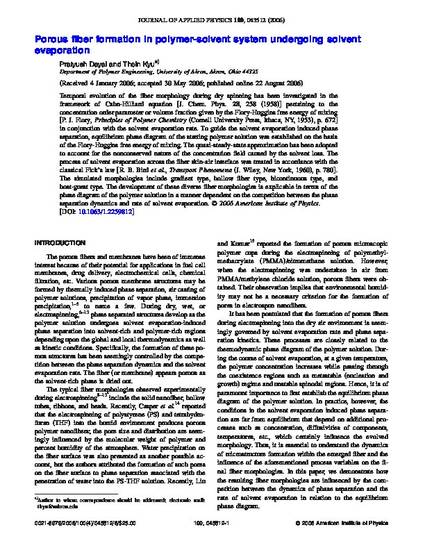
Temporal evolution of the fiber morphology during dry spinning has been investigated in the framework of Cahn-Hilliard equation [J. Chem. Phys. 28, 258 (1958)] pertaining to the concentration order parameter or volume fraction given by the Flory-Huggins free energy of mixing [P. J. Flory, Principles of Polymer Chemistry (Cornell University Press, Ithaca, NY, 1953), p. 672] in conjunction with the solvent evaporation rate. To guide the solvent evaporation induced phase separation, equilibrium phase diagram of the starting polymer solution was established on the basis of the Flory-Huggins free energy of mixing. The quasi-steady-state approximation has been adopted to account for the nonconserved nature of the concentration field caused by the solvent loss. The process of solvent evaporation across the fiber skin-air interface was treated in accordance with the classical Fick's law [R. B. Bird , Transport Phenomena (J. Wiley, New York, 1960), p. 780]. The simulated morphologies include gradient type, hollow fiber type, bicontinuous type, and host-guest type. The development of these diverse fiber morphologies is explicable in terms of the phase diagram of the polymer solution in a manner dependent on the competition between the phase separation dynamics and rate of solvent evaporation. (c) 2006 American Institute of Physics.
Available at: http://works.bepress.com/thein_kyu/1/
